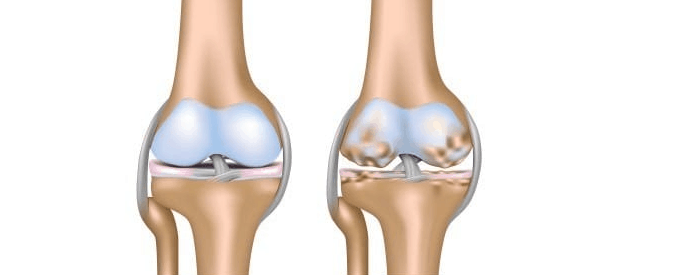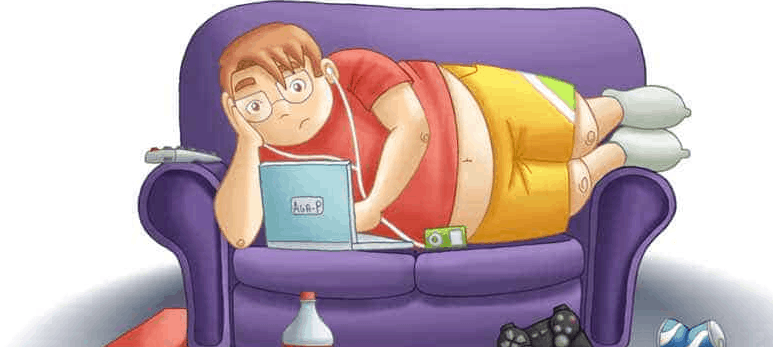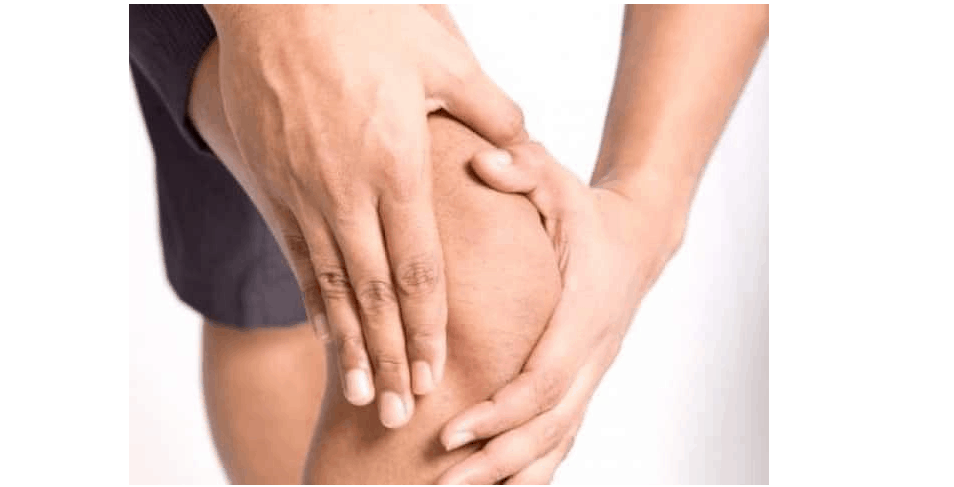Disclaimer: There may be affiliate links, which means I’ll receive a commission if you sign up for a free trial or purchase through the links, but there is no extra cost to you.
What is Osteoarthritis?
Arthritis, known as osteoarthritis, is the most common disease of the musculoskeletal system. It attacks the joints, mainly promoting the wear and tear of the cartilage that covers the ends of the bones and also damages other joint components such as ligaments, synovial membrane and synovial fluid. Articular cartilage has the function of promoting the sliding, without friction, between two bony extremities during the movement of a joint. Its impairment can cause pain, swelling and functional limitation .
Although it can damage any joint in the body, arthritis most commonly affects the joints of the hands, spine, knees and hips. It is a progressive and degenerative process, as it changes the functioning of the cells, tissues or organs of the human body. The osteoarthritis gradually worsens over time, and there is no cure. But treatments can slow the progression of the disease, relieve pain and improve joint function. It is a chronic disease that affects millions of people.
Osteoarthritis is very common. In Brazil alone, it reaches up to 15 million people, according to the Ministry of Health. The World Health Organization has proved that osteoarthritis is the fourth disease that most decreases people’s quality of life. That’s because this disease has no cure. When it is not treated it can get progressively worse. But current treatments are able to slow this progression and offer enormous relief in symptoms, restoring the ability to move.
These tendons are responsible for those flexing movements that we are used to doing every day, such as flexing the fingers, bending the wrists and turning the palm down, for example.
Medial epicondylitis is also known by the informal name of “golfer’s elbow” because due to the movements required in this activity, the incidence in the practitioners of the sport is quite large. Medial epicondylitis occurs in about 0.5% of the general population, mainly in people between the ages of 45 and 55 who are active.
An elbow pain with a very similar name is lateral epicondylitis , which would be the “tennis player’s elbow”. In this case, the pain is more concentrated in the lateral region of the elbow, due to the arm extension movements performed during tennis games and other physical and sports activities
According to the World Health Organization, osteoarthritis is the fourth disease that most reduces quality of life for each year lived.
What is the difference between primary or secondary arthritis?

The arthritis can be primary or secondary. The primary occurs mainly due to the excessive use of a joint, but also due to the natural aging of the individual. Repetitive use of joints over the years causes damage to cartilage, which leads to joint pain and swelling. Over the years, the fluid that exists between the joints (synovial fluid) degenerates, as well as the cartilage that covers this fluid, called the synovial membrane.
Repetitive use of joints over the years causes damage to cartilage, which leads to joint pain and swelling. In advanced cases, there is a total loss of cartilage that surrounds the bony ends in the joints. This causes direct friction between the bones, causing pain and limiting joint mobility. Cartilage damage can also stimulate calcifications at some points around the joints, forming osteophytes, which are also called parrot beaks when they affect the spine. Primary arthritis can often be found in several members of the same family, which suggests that it may have hereditary characteristics.
Already the secondary osteoarthritis is a result of diseases or conditions that the person has. Problems that can lead to secondary arthritis include obesity, repeated trauma or surgery of joint structures, abnormal joints at birth (congenital anomalies), gout, rheumatoid arthritis, diabetes and other hormonal disorders.
What are the risk factors for osteoarthritis?

There are a few factors that increase a person’s chances of having osteoarthritis:
- Excess weight: Obesity causes the joints to bear more weight than they are prepared for and this forces them to work too hard causing faster wear and tear
- Deformation of the bones involved in the joints, caused by genetic factors.
- Probably because of their hormones or physical composition, women are more affected by osteoarthritis than men.
- Aging: joints also age.
- Professions and physical activities that require repetitive movements, as in the case of masons, painters and athletes, can increase the chances of the disease to appear.
Symptoms of osteoarthritis
The main symptom of osteoarthritis is the pain that the person feels in the joints that are affected. Probably due to excessive movement, the pain usually worsens at the end of the day. It is common for swelling to appear in these joints, as well as heat. And movements are usually affected. Who has the problem and spends some time inactive, for example, sitting for a long time in a chair, may have some joint stiffness.
The intensity of these symptoms varies greatly from person to person. While some may be completely debilitated by the symptoms, others feel almost nothing, even though the degeneration exists. Symptoms can also be intermittent. Osteoarthritis of the knee usually occurs because of obesity. When it occurs in the knees, it can modify the patient’s way of getting around. Already in the spine it can result in pain in the lumbar region, in the neck and in the back. When it affects the fingers of the hands, arthritis causes hard nodules to appear in the small joints, causing deformations.
Factors that increase the risk of developing osteoarthritis

There are some factors that increase the risk of arthritis appearing. The main thing is the advancement of age due to natural wear and tear. Another is obesity. Bone deformities also influence the disease.
Some types of accidents and injuries start the process of osteoarthritis. Those who work with repetitive movements also need to be careful.
How osteoarthritis is diagnosed
A specialist medical doctor, such as a physiatrist , should be consulted if you experience burning pain and swelling in any joint. Tell the specialist a detailed description of what you felt when you started, as well as your and your family’s health history. All of this will help the doctor to understand what your problem is.
The specialist will perform a physical examination to closely examine the diseased joint, looking for redness, tenderness or swelling. He will also analyze how the movements using that joint are doing. Depending on the case, imaging tests such as X-rays and MRIs may be ordered, which will enable a more detailed observation of the affected joint.
Some laboratory tests may also be necessary, such as a blood or synovial fluid test, which can determine whether there is inflammation or infection.
What is the treatment for osteoarthritis

A definitive cure for osteoarthritis has not yet been discovered. What today’s experts are able to do is reduce pain, slow the progress of the disease and maintain the patient’s normal movements.
To reduce pain, some medications are generally used. But this will also depend on each case and the patient’s profile. Simple painkillers, for example, can relieve pain, but will not act on inflammation. They are more recommended for those who have mild osteoarthritis .
As for the anti-inflammatory ‘s not steroids can reduce inflammation as well as relieve pain. But they are not for everyone because they have side effects such as liver and kidney damage, stomach pain, ringing in the ears and cardiovascular problems. The older a person is, the greater the risk of these effects causing complications.
There are stronger drugs, such as narcotics, that contain opioid-like ingredients like morphine, codeine, among others. They are able to offer pain relief in the case of more severe osteoarthritis . The problem with this type of stronger medicine is that they have a risk of dependence, despite being considered small by specialists. In addition, they have side effects ranging from drowsiness to nausea and constipation.
It is important, precisely because of the side effects and what the drugs are capable of doing, that when the person suffers from osteoarthritis, look for a specialist to be treated. It is in no way advisable to take medication on your own as this may even make the problem worse. After the diagnosis is made and the doctor recommends the necessary medication, follow the guidelines to the letter, buying the correct medicine, respecting the times suggested by the specialist, as well as the dose that should be taken. Any changes to any of these three guidelines may affect treatment and it may not be as effective as expected.
Some types of therapies can be used in combination with treatment to help with pain relief and prevention. The acupuncture is now widely used and effective for balancing the body as a whole and thus help prevent and control pain. The Acupuncture is a good therapeutic option for the relief of symptoms of osteoarthritis such as pain and limitation of movement, helping to relax too muscles around the joint, allowing better quality of life. Several large studies indicate that acupuncture can have a beneficial effect for patients with osteoarthritis , with results that can be maintained for a medium to long period after the sessions.
Already the physical therapy can help the patient to make a series of individualized exercises to strengthen the muscles that are around the diseased joint. And in that way, increase the ability to move and reduce pain. There is also occupational therapy that can help those who have osteoarthritis to discover new ways to do their daily tasks or work without affecting the joints that are already sore.
Some physiatrists choose to use infiltrations depending on the case and their patient’s health history. Especially when it is observed that traditional procedures are not helping. The infiltrations can be injections of cortisone, that is, corticosteroid medications that relieve joint pain. It is necessary to do this with a specialist because the excess of this medicine can make the problem worse. Another option is hyaluronic acid injections which, in addition to relieving pain, also offer some cushioning of the joints.
When is the case of osteoarthritis surgery

In some rare cases, none of the treatments mentioned are effective or the situation is more complicated and requires a surgical procedure. In such cases, there are two ways. The doctor can opt for a realignment of the bones, in an operation called osteotomy. The bone is cut to be realigned. This removes the weight of the body from the worn part. Another way to reduce the problem is to replace the joint. In this more radical form of surgery, joint surfaces that are damaged are replaced with prostheses made of metal and special plastic.
These prostheses are usually used when the problem affects the hip and knee joints. The risks are the same as for a medium-sized surgery, such as infections and thrombosis (formation of clots inside the veins. The prostheses must be monitored as they wear out or loosen over the years, which may require a new one. surgery to replace them.
When the person has osteoarthritis but follows the treatments proposed by the specialist, respecting schedules, doses, duration and what should be done, life can have a great quality, with reduced and even nonexistent pain, and the return of normal movements at all the body.
Myths and truths of osteoarthritis
The osteoarthritis is a popular disease in US, especially among the elderly.
The research to deal with them is also great. And even so, many myths are created.
Let’s talk now about some of these myths.
Arthritis has no definitive cure: TRUTH
Actually, arthritis does not have a definitive cure, but there are treatments that promote a significant improvement in the well-being and quality of life of patients, helping to improve or totally end the symptoms of the pathology.
Drug therapy, knee infiltration with corticosteroids or hyaluronic acid, and acupuncture can help in the conservative treatment of osteoarthritis , prevention of its complications and improvement in quality of life.
The essential thing is to look for a specialist as soon as possible to have a diagnosis right away and know the best treatment
Arthritis develops equally in all patients: MYTH
Although there are similar cases of osteoarthritis , each organism is affected by the disease in a particular way.
Its evolution depends a lot on the existence or not of factors that can aggravate the case, such as hereditary issues, hormonal factors, bone density, obesity, among others.
The disease is present only in articular regions of the body: TRUTH
The joints are the spaces or areas in which two or more bones are found, as in the hip, knee, shoulder, elbow and ankle. Joint pain is the sensation of discomfort and, depending on the intensity, can disable the individual for the simplest activities of daily life.
It was previously believed that arthritis was specific to cartilage, which is a structure that covers the tip of the bones to allow better sliding between them. Today, it is already known that the involvement is in the entire joint, which can include ligaments, bones and muscle.
Excess weight exacerbates the symptoms of osteoarthritis: TRUTH
Those who have arthritis and are still overweight have the problem worse. Due to excess weight, the joints end up suffering a greater overload, worsening the symptoms of arthritis .
This happens mainly in the knee and hip joints, which are responsible for the natural support of the body. The knees are usually the most affected joint, reaching 80% of people over 41 years old.
The incidence of arthritis in men and women is the same: MYTH
Studies prove that there are more women affected by the disease. According to the Brazilian Society for the Study of Pain (SBED), they represent 61% of patients suffering from the pathology.
Only the elderly are affected by arthritis: MYTH
The arthritis is still remembered as a problem that comes exclusively with aging, however, although most of chaos arthritis fact primarily affects people over 60 years, this disease is not restricted to the elderly, affecting children, youth and adults too.
This overload happens due to trauma, accidents or obesity, physical activities carried out in an exaggerated and careless way, among other causes, which can happen early.
Elderly people with arthritis will certainly be disabled: MYTH
Arthritis really has no cure. But when the diagnosis is made quickly and treatments start early, the progression of arthritis can be slowed or even stopped. That is why it is essential to remain alert and seek immediate help in case of any suspicion of the disease.
This makes the person have a good quality of life and perform their daily activities normally. The advice of the experts is to maintain healthy habits and practice physical exercises.
Sports practice can generate injuries: TRUTH
The sports that offer the most risks are those that require greater amplitude and hip movement, rotations or those with ‘explosive actions’, that is, actions that require sudden acceleration and deceleration, such as football, tennis, golf, martial arts, dances, ballet , Olympic gymnastics and athletics. Inadequate exercise is the main cause of problems.
Among the most frequent injuries are muscle strains and tendonitis, which usually occur due to overload, overexertion, sprain, contusion or training error.
Several studies have already proven that physical exercises performed with the accompaniment of health professionals alleviate the symptoms of arthritis in the long term. This is because these exercises help to strengthen muscles and bones, reducing the symptoms of arthritis. When the muscles are strong and elongated they can reduce the pressure and absorb some of the overhead that goes to the joints.
Whoever carried a lot of weight during their life develops symptoms of arthritis: TRUTH
When carrying excess weight you overload your joints. This is one of the main causes of the onset of arthritis. The arthritis can be caused by certain habits, such as recurrent bad posture, lifting excess weight, repetitive strain, among others. According to the Brazilian Society of Orthopedics and Traumatology, 20% of Brazilian adults are already affected by the disease and excessive physical exercise will be the cause of the cases in the future. In addition, excessive physical exercise will be the cause of 45% of the country’s osteoarthritis cases in the future, according to the book “Osteoarthritis – Current Scenario and Trends in USA”.
Those who have joint pain have osteoarthritis: MYTH
False. The osteoarthritis actually causes joint pain. But there are other diseases that can result in the same symptom.
This is the case with some infectious and traumatic illnesses that can initiate the same symptoms.
Conclusion
Demystifying arthritis is important, in order to know how to deal with the disease in the best possible way. As we said, there is no cure for osteoarthritis , but treatments can help reduce pain and maintain movement and joint function. Medications such as simple painkillers, anti-inflammatories, therapies such as acupuncture , infiltrations and even surgical procedures, depending on each case, are very important for a quality treatment and successful results.


